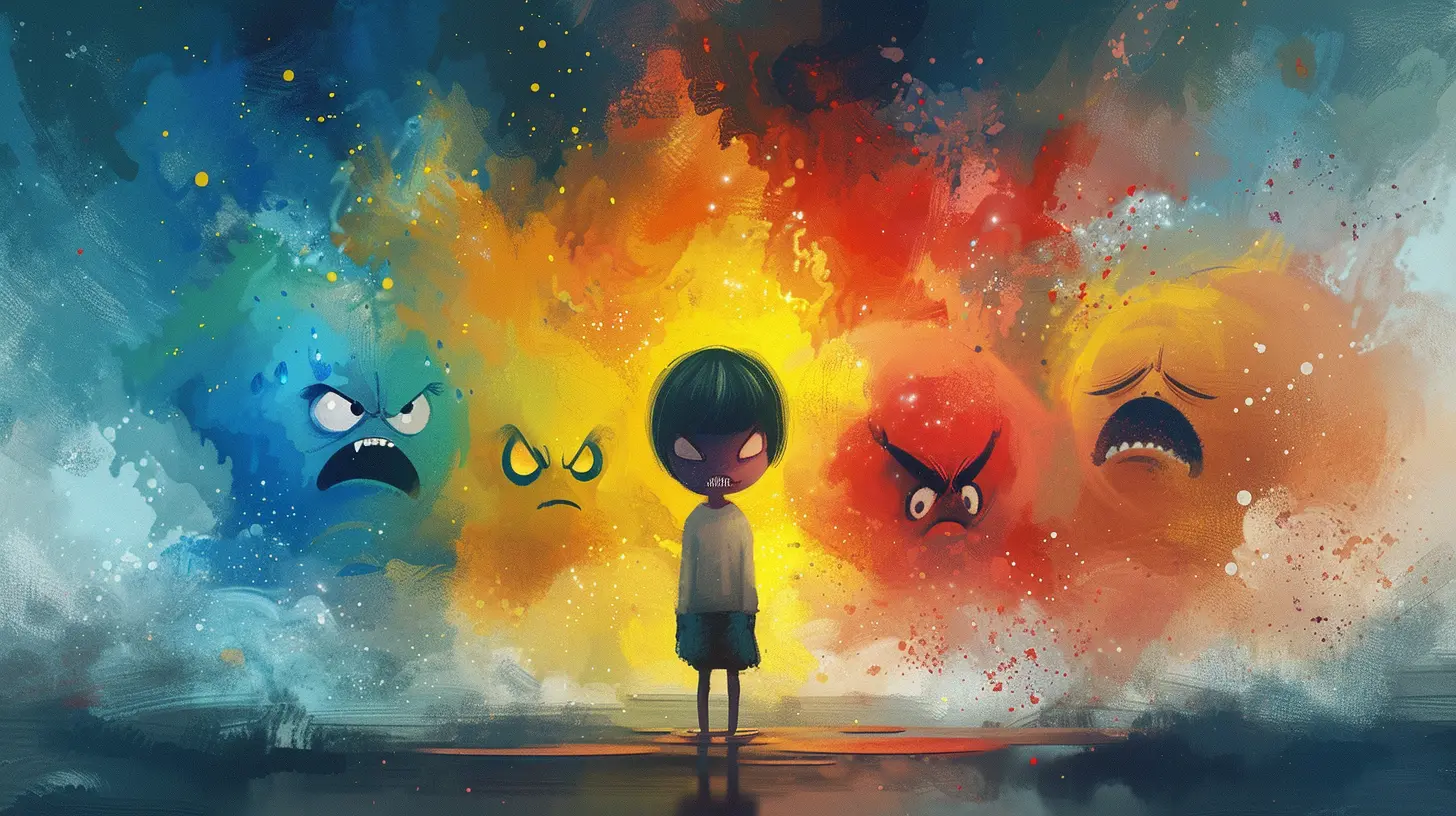How to Help Your Child Manage Big Emotions
15 May 2025
Parenting is an adventure filled with giggles, hugs, and yes—lots of emotions. One minute, your child is beaming with joy, and the next, they’re a puddle of tears on the floor. If you're nodding along, wondering how to help your child navigate these waves of emotions, you’re not alone.
Emotions, especially big ones, can feel overwhelming for kids. The good news? With a little patience and some simple strategies, you can help them learn how to manage their feelings in a healthy way. Let’s dive in!
Understanding Big Emotions in Children
Why Do Kids Struggle With Big Emotions?
Imagine trying to build an Ikea shelf without an instruction manual. That’s how kids often feel when they experience strong emotions—they have no clue what to do with them.Children’s brains are still developing, especially the part responsible for impulse control and emotional regulation (hello, tantrums!). They feel emotions deeply, but they lack the tools to express or manage them effectively.
The Science Behind It
The brain’s emotional control center, the amygdala, kicks into high gear when a child feels overwhelmed. Meanwhile, the prefrontal cortex—the part that helps with reasoning and self-control—is still a work in progress. This explains why your child may scream over the "wrong" color of cup but struggle to simply ask for a different one.Understanding this helps us approach their emotional meltdowns with empathy rather than frustration.
Signs Your Child is Struggling With Big Emotions
Every child expresses emotions differently, but common signs of difficulty include:- Frequent tantrums or outbursts
- Difficulty calming down after getting upset
- Aggressive behavior, like hitting or throwing objects
- Withdrawing or shutting down emotionally
- Expressing emotions in extreme ways (e.g., going from 0 to 100 in seconds)
These behaviors signal that your little one needs guidance in managing their emotions.
How to Help Your Child Manage Big Emotions
Now, let’s get into the real deal—how you can support your child through their emotional rollercoaster.1. Stay Calm and Be Their Anchor
Ever notice how your child picks up on your mood? If you're stressed, they get more anxious. If you stay calm, it helps them regulate their emotions too.Think of yourself as their emotional anchor. When they’re caught in a storm of feelings, your calm presence reassures them that everything will be okay.
Try this: Take a deep breath before responding. Speak in a steady, gentle tone, even if they’re screaming.
2. Name the Emotion to Tame It
When kids don't understand what they’re feeling, emotions can feel even bigger. Teaching them to name their feelings gives them a sense of control.Instead of saying, “Stop freaking out,” try:
“I see that you’re really angry right now. It’s okay to feel mad, but let’s find a way to calm down.”
Why this works: Labeling emotions helps shift activity from the emotional brain to the thinking brain, making it easier to manage feelings.
3. Teach Healthy Ways to Express Feelings
Kids often act out because they don’t know how else to express what’s going on inside them. Give them tools to express their emotions in positive ways.Some ideas:
- Encourage them to use words: “I feel frustrated because…”
- Offer a "calm-down corner" with soft toys, books, and coloring materials.
- Teach deep breathing exercises (like “smell the flower, blow out the candle”).
- Suggest physical outlets like jumping, stretching, or squeezing a stress ball.
4. Validate Their Feelings
Telling a child "You're fine" when they clearly don’t feel fine can make them even more upset. Instead, acknowledge their feelings.For example:
- “I can see that you're really upset about this.”
- “It’s frustrating when things don’t go the way you want, isn’t it?”
Validation helps children feel understood and teaches them that emotions are normal—it's how we handle them that matters.
5. Model Emotional Regulation
Kids learn by watching us. If you explode the moment you hit traffic, they’ll assume that’s how to react to frustration.Instead, model self-regulation:
- Say, “I’m feeling really frustrated right now. I’m going to take a deep breath before I react.”
- Show them how you calm yourself when you're upset.
Your behavior teaches them more than any lecture ever could.
6. Create a Predictable Routine
Children thrive on routine because it gives them a sense of security. When they know what to expect, they feel more in control and are less likely to be overwhelmed by emotions.Try to maintain consistent bedtime, mealtime, and playtime routines. It doesn’t have to be rigid—just predictable enough to provide stability.
7. Encourage Problem-Solving
Instead of always stepping in to fix things, teach your child how to handle challenges on their own.For example:
1. Identify the problem: "You and your sister both want the same toy. What should we do?"
2. Brainstorm solutions: "Can you take turns? Find another toy? Play together?"
3. Try a solution and see what works.
Problem-solving is a lifelong skill that helps kids feel empowered rather than overwhelmed.
8. Read Books About Feelings
Books are a great way to help young children understand emotions. Stories about characters experiencing big feelings can show them they’re not alone and teach them healthy ways to cope.Some great options:
- The Color Monster by Anna Llenas
- When Sophie Gets Angry—Really, Really Angry by Molly Bang
- The Feelings Book by Todd Parr
9. Use Positive Reinforcement
Praise your child when they manage their emotions well. Positive reinforcement encourages them to repeat those behaviors.For example:
- "I noticed how you took deep breaths when you were frustrated. That was a great way to calm down!"
- "You shared your toy even though you wanted to keep it. That was so kind!"
Acknowledging their progress makes a big difference.
10. Be Patient—Progress Takes Time
Helping kids manage big emotions isn’t an overnight fix. Some days will be smoother than others, and that’s okay.Celebrate small victories, and remember—your child is learning an essential life skill. With your guidance, they’ll develop the emotional resilience needed for the ups and downs of life.
Final Thoughts
Parenting through big emotions can feel like riding an unpredictable rollercoaster. But with patience, empathy, and the right tools, you can help your child learn how to navigate their feelings in a healthy way.Remember, emotions aren’t the enemy—how we handle them is what truly matters. By teaching your child emotional regulation, you’re giving them a skill that will benefit them for life.
So the next time your child has a meltdown, take a deep breath, offer understanding, and guide them toward calmness. You've got this!
all images in this post were generated using AI tools
Category:
Emotional DevelopmentAuthor:

Maya Underwood
Discussion
rate this article
3 comments
Reina McWain
Teaching kids to ride the rollercoaster of emotions is essential—acknowledge the highs and lows, provide tools for the ride, and remind them it's okay to scream, cry, or just breathe.
May 18, 2025 at 4:12 PM

Maya Underwood
Absolutely! Equipping kids with the skills to navigate their emotions fosters resilience and helps them embrace life's ups and downs.
Evren Watson
Empathy and validation are key to emotional growth.
May 17, 2025 at 3:48 AM

Maya Underwood
Absolutely! Empathy and validation create a safe space for children to express their feelings, fostering emotional growth and resilience.
Gianna Phillips
Every child experiences big emotions, and it's important to approach these moments with patience and understanding. Your support can help them navigate through their feelings and build resilience.
May 16, 2025 at 4:24 AM

Maya Underwood
Thank you for your insightful comment! Patience and understanding are indeed crucial in helping children navigate their emotions and develop resilience.



